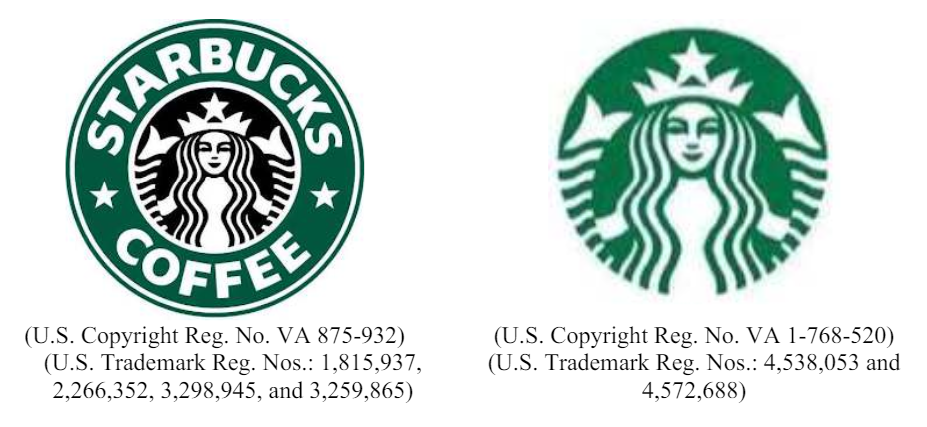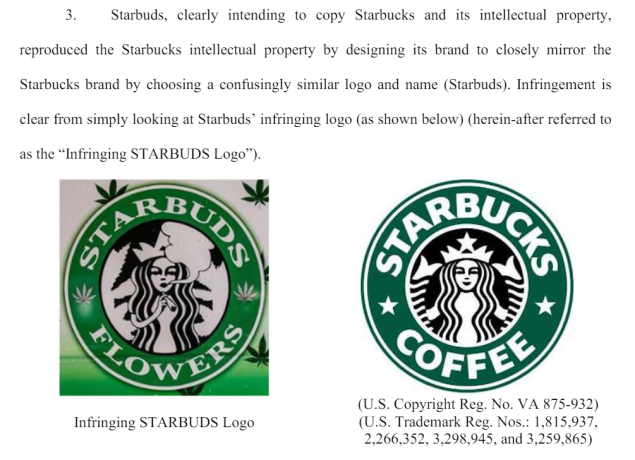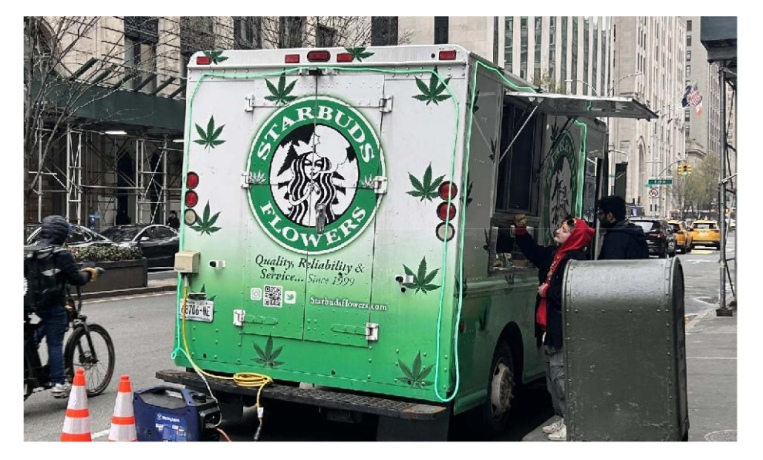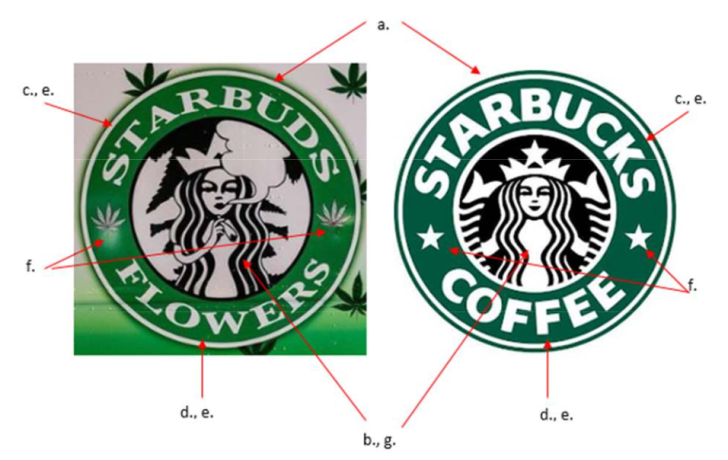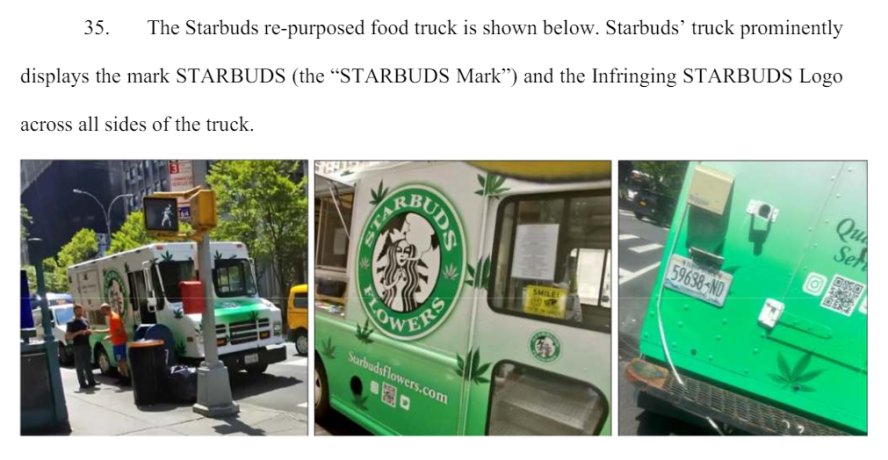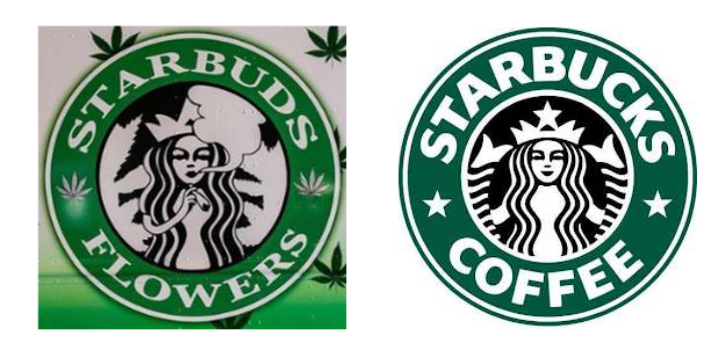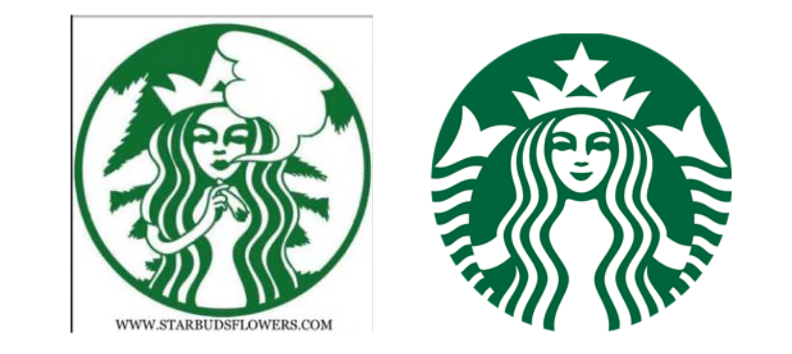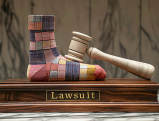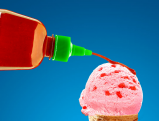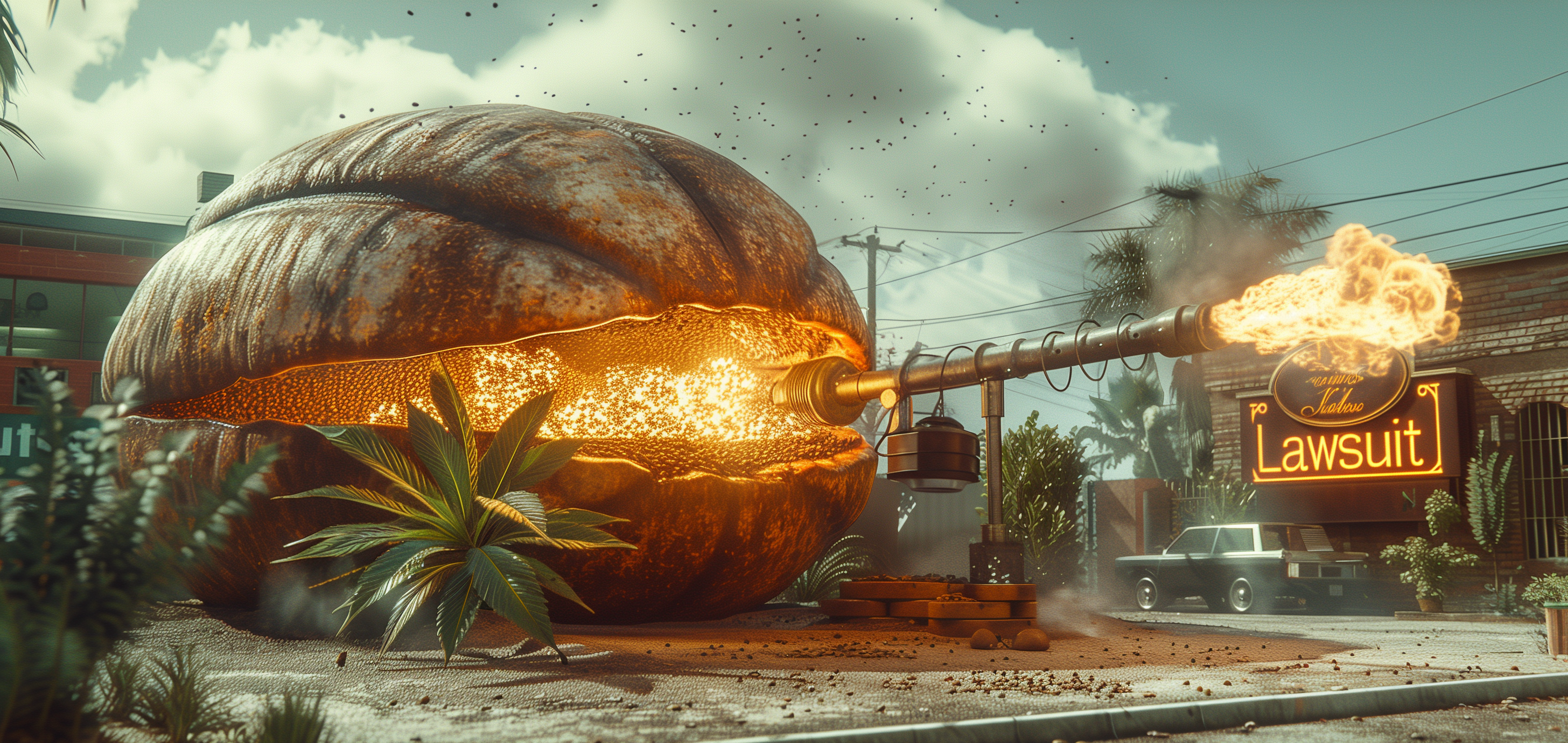
Starbucks has launched a high-stakes trademark lawsuit against cannabis company Starbuds, claiming their logo infringes on the iconic mermaid.
by LawInc Staff
July 2, 2024
The Starbucks v. Starbuds trademark infringement lawsuit has the legal world buzzing, as the global coffee giant takes on a cannabis startup over alleged copying of its famous branding. Understanding the complex intellectual property issues at play is essential for grasping what’s really at stake.
This guide breaks down everything you need to know about the high-profile case, from the basics of trademark law to the strengths and weaknesses of each side’s claims. Learn the key arguments, possible defenses, and potential outcomes as two household names battle it out over trademark rights.
Whether you’re a legal scholar, business owner, or just fascinated by major court fights, this comprehensive yet accessible analysis will give you invaluable insights into the Starbucks v. Starbuds showdown.
1. Parties & Trademarks at Issue
-
- Starbucks Corporation: Global coffee retailer & coffeehouse chain founded in Seattle in 1971, now with over 30,000 locations worldwide.
- Starbuds Flowers (Brandpat LLC): New York-based mobile cannabis dispensary operating out of a food truck under the STARBUDS name & logo.
- The Starbucks Marks: The famous STARBUCKS word mark and iconic green siren logo, used for 50+ years and registered as multiple trademarks.
- The Starbuds Marks: The STARBUDS word mark and siren-like logo Starbucks claims are confusingly similar imitations of its branding.
- Starbucks’ Trademark Registrations: Include U.S. Reg. Nos. 1,815,937; 2,266,352; 3,259,865 for the siren logo and 1,452,359 for the word mark.
Examples:
-
- First used in commerce in 1971, the STARBUCKS word mark has become one of the most well-known brand names in the world through extensive promotion and a reputation for quality coffee.
- Dating back to 1992, Starbucks holds numerous federal trademark registrations for its iconic green siren logo, giving it strong nationwide rights.
- The STARBUDS word mark mimics STARBUCKS in appearance, sound, and meaning, while its siren logo closely copies key elements of the Starbucks siren design.
- As a startup in the emerging legal cannabis market, Starbuds has only recently begun using its alleged copycat name and logo on its food truck and products.
- Starbucks owns incontestable registrations for its core marks, giving them a strong presumption of validity in a trademark infringement lawsuit.
Key Takeaways:
-
- Look at the long history and global fame of the senior user’s marks (Starbucks) compared to the junior user’s (Starbuds) recent adoption in a single market.
- Compare the strong similarities in appearance, sound, meaning and commercial impression between the marks at issue, like STARBUDS vs. STARBUCKS.
- Note the numerous federal trademark registrations Starbucks holds and has invested in for decades, many of which are now “incontestable” under the law.
- Consider the key differences too, like Starbucks’ primary business being coffee/cafes vs. Starbuds focusing on selling cannabis/marijuana.
- Think about each side’s relative resources and ability to engage in a prolonged legal battle – a huge disparity between an established corporation and new startup.
FAQs:
-
- Why does Starbucks’ long use of its marks matter? The longer a mark is used, the stronger the owner’s rights in it and an “incontestable” registration can be gained after 5 years.
- Is it important the companies sell different products? While it can matter, if the marks are similar enough it may cause confusion that the goods are affiliated, sponsored or endorsed by the same source.
- What makes a trademark “famous”? Widespread recognition among the general consuming public, often due to long use, high sales, and extensive promotion.
- Does Starbuds’ satirical intent matter? Parody is not an automatic defense if the use still creates confusion or trades on the goodwill of the famous mark being imitated.
- Could Starbuds claim Starbucks’ marks are too weak to protect? It’s very difficult to invalidate the distinctiveness of marks as well-established in the public mind as Starbucks’.
2. Starbucks’ Copyright Infringement Claims
-
- Allegations: Starbuds copied original elements of Starbucks’ copyrighted siren logo designs in its Starbuds logo to mimic the famous mark.
- Key Similarities Claimed: Siren/mermaid figure in center, green outer border and black interior, stars, waves of hair, siren tail, etc.
- Copyright Registrations: Starbucks owns U.S. Copyright Reg. Nos. VA 875-932 and VA 1-768-520 for variations of its siren logo artwork.
- Proof Required: (1) Ownership of a valid copyright, and (2) copying of constituent elements of the work that are original.
- Defenses: Argue dissimilarities outweigh similarities, or that any shared elements are unprotectable ideas or concepts, not expression.
Examples:
-
- Like the Starbucks siren mark, the Starbuds logo features a two-tailed siren/mermaid figure as its centerpiece, surrounded by a green border.
- While not identical, the Starbuds logo mimics the unique wavy hair pattern of the Starbucks siren that frames her face on both sides.
- Starbucks’ early copyright registration from 1992 (VA 875-932) gives it decades of priority over Starbuds’ recent logo creation.
- If Starbucks can show Starbuds had access to its copyrighted logo artwork and substantially copied key original elements, infringement may be found.
- Starbuds’ best defense is to argue its mermaid drawing shares only unprotectable ideas with Starbucks’, not specific expressive details.
Key Takeaways:
-
- Closely compare the specific creative details of the Starbucks siren logo with the corresponding elements of the Starbuds logo – do they match?
- Note the conceptual and compositional similarities in how the logos are arranged with the siren/mermaid as the central focal point.
- Evaluate if the shared elements are generic ideas (girl with tail) or protectable expressions (particular facial features, hair waves, posture, etc.).
- Consider if Starbuds added enough of its own original creative expression to make its design not substantially similar to a copyrighted Starbucks logo.
- Recall that unlike trademarks, copyright doesn’t require likelihood of confusion but just substantial similarity plus copying of original elements.
FAQs:
-
- What does a copyright protect? Original works of creative authorship fixed in a tangible medium of expression, like unique artwork in a logo design.
- How different must a design be to avoid copyright infringement? It depends, but generally it can’t be “substantially similar” to a copyrighted work, sharing the same aesthetic appeal.
- Can you copyright an idea? No, only the original expressive details you use to execute an idea in a particular creative work are protected, not the underlying concept.
- What remedies are available for infringement? Statutory damages of $750-$30,000 per work ($150,000 if willful), injunctions, impoundment, attorneys’ fees, etc.
- How long does copyright last? For works created in 1978 or after, copyright lasts for the author’s life plus an additional 70 years.
3. Strength of Starbucks’ Trademark Claims
-
- Federal Trademark Infringement: Use of a mark in commerce that is likely to cause confusion with another’s prior registered mark.
- Key Factors: Strength of Starbucks’ marks, similarity of the marks, relatedness of goods/services, actual confusion, Starbuds’ intent.
- Dilution by Blurring: Use of a mark likely to weaken a famous mark’s distinctiveness by creating mental associations with the new mark.
- Dilution by Tarnishment: Use of a mark likely to harm a famous mark’s reputation by associating it with inferior or unwholesome products.
- Trademark Defenses: Argue marks are too dissimilar, goods are unrelated, no actual confusion, use is a protected parody, marks aren’t famous.
Examples:
-
- With its 50+ years of use, extensive sales and advertising, and pop culture prominence, the STARBUCKS mark is indisputably strong and famous.
- STARBUDS is nearly identical to STARBUCKS in sight, sound and meaning – only 2 letters differ and the similarity in structure/syllables is clear.
- While coffee and cannabis may seem unrelated, both are ingestible lifestyle products and consumers could assume a business affiliation exists.
- The STARBUDS mark, especially combined with a mermaid logo, seems plainly adopted with an intent to play off the fame of Starbucks’ marks.
- By associating Starbucks’ clean, inviting marks with a drug dispensary food truck, Starbuds may tarnish their reputation as family-friendly.
Key Takeaways:
-
- Starbucks as the clear senior user with incontestably strong marks has inherent advantages over Starbuds as a new business with imitative branding.
- The striking similarity between STARBUCKS and STARBUDS, especially combined with the mermaid logo, weighs heavily in a confusion analysis.
- Starbuds’ presumed intent to trade on Starbucks’ fame and goodwill, rather than build its own brand identity, will be viewed skeptically by courts.
- Starbucks will argue that consumers could easily believe it has expanded into the emerging legal cannabis market under a STARBUDS sub-brand.
- To show dilution, Starbucks must prove fame and that Starbuds’ use began after its marks became famous and is likely to impair their distinctiveness or reputation.
FAQs:
-
- What’s the test for likelihood of confusion? Courts weigh factors like the strength of the senior mark, similarity of marks, relatedness of goods, actual confusion, junior user’s intent, etc.
- Is proof of actual confusion required? No, likelihood of confusion is enough, but evidence of actual consumer confusion is very persuasive.
- Can you infringe a mark without using the exact same words? Yes, if the marks are similar enough to create confusion, like STARBUDS vs. STARBUCKS or a lookalike logo.
- How famous must a mark be for dilution protection? It must be widely recognized by the general U.S. public as a designation of the source of goods/services.
- Does a parody defense protect all humorous uses? No, a parody must still not cause confusion or dilute a famous mark to be permissible – it’s a high bar.
4. Starbucks’ Dilution Claims
-
- Dilution Law Protects Famous Marks: Owners can sue for dilution of marks widely recognized by the general consuming public.
- Dilution by Blurring: Starbucks claims Starbuds’ use weakens the distinctiveness of its famous marks by creating new mental associations.
- Dilution by Tarnishment: Starbucks argues Starbuds damages its reputation by linking its wholesome marks with marijuana sales.
- Proving Fame: Starbucks cites its marks’ long use, massive sales, extensive promotion, and widespread public recognition.
- Dilution Remedies: Injunctions against further diluting use, damages and profits if dilution is found to be willful.
Examples:
-
- Starbucks has regularly been ranked as one of the world’s most valuable brands for over 20 years by leading brand valuation studies.
- When consumers encounter the STARBUDS mark, many will likely automatically think of STARBUCKS, blurring the marks’ distinctiveness.
- By linking the wholesome STARBUCKS name and siren logo with a marijuana dispensary food truck, Starbuds may degrade their reputation.
- Multiple federal courts have already recognized the fame of the STARBUCKS marks based on their long use and public prominence.
- If Starbucks proves Starbuds willfully intended to trade on its marks’ fame, it could recover profits, damages and fees on top of an injunction.
Key Takeaways:
-
- Note how dilution law gives special protection to famous marks’ distinctiveness and reputation against unauthorized uses, even on unrelated goods.
- Focus on how the sheer similarity between STARBUCKS and STARBUDS will likely trigger immediate associations in consumers’ minds.
- Consider if reasonable consumers might perceive Starbucks’ prestige brand as “going downhill” by branching into the cannabis truck business.
- Recognize how much evidence Starbucks has amassed over decades to prove the undeniable fame and widespread recognition of its marks.
- Understand that dilution gives Starbucks a potent sword to wield against wannabe copycats looking for an easy way to capture attention.
FAQs:
-
- What’s the difference between dilution and infringement? Dilution protects a famous mark’s distinctiveness even without likelihood of confusion; infringement requires confusion but no fame.
- How do you prove a mark is famous for dilution? Factors include sales/ad volume, media coverage, social media followers, consumer studies, prior court rulings, inclusion in famous brand lists, etc.
- Can you sue for dilution by tarnishment over just one unwholesome use? Likely yes, if the use is shocking enough to immediately degrade consumer perceptions of the famous mark (e.g. hardcore pornography).
- Is dilution harder to prove than infringement? Often yes, as it requires proving the threshold element of fame which most marks can never show.
- Why did Congress pass a dilution law? To preserve the value of famous marks’ selling power and unique identity in the national economy against free-riders.
5. Starbucks’ State Law & Related Claims
-
- NY Trademark Dilution: New York’s state dilution law is similar to the federal one but has a lower distinctiveness bar than fame.
- Unfair Competition: Starbucks may argue Starbuds’ lookalike branding constitutes unfair business practices designed to free-ride on its goodwill.
- Unjust Enrichment: Starbucks could claim Starbuds is being unjustly enriched by profiting off the customer-drawing power of its marks.
- Harm to Reputation/Goodwill: Starbucks may allege Starbuds is damaging its hard-earned reputation for quality and social responsibility.
- Irreparable Harm: To get an injunction, Starbucks will argue it is suffering irreparable harm to its brand that can’t be fixed by money damages alone.
Examples:
-
- By mimicking the STARBUCKS marks so closely in name and trade dress, Starbuds appears to be deliberately siphoning off Starbucks’ brand equity.
- Starbuds should not be allowed to reap where it has not sown by profiting from marks Starbucks spent decades and billions to promote.
- Even if STARBUDS doesn’t cause confusion, it may still qualify as famous and distinctive marks being whittled away under New York law.
- Starbucks may find it difficult to quantify exactly how much in sales it loses or what price premium it can no longer charge because of Starbuds’ conduct.
- Starbuds’ unflattering depiction of the siren mascot smoking a joint could degrade parents’ trust in taking kids to Starbucks, harming its family-friendly image.
Key Takeaways:
-
- Note how overlapping state and federal claims give mark owners multiple bites at the apple to vindicate their rights against imitators.
- Recognize how an obvious intent to copy, without any real attempt at differentiation, will be viewed as unfair competition by most courts.
- Starbucks will emphasize how its marks’ magnetism, rather than Starbuds’ own efforts, is what’s really driving Starbuds’ consumer interest and sales.
- Loss of control over brand image and being linked with an inconsistent lifestyle message may constitute irreparable harm to Starbucks.
- Starbucks wants to set a clear public precedent that no one can get away with ripping off its name, logo and goodwill for their own gain.
FAQs:
-
- What does NY dilution law cover that federal law doesn’t? It protects marks that are distinctive and famous in New York even if not nationally.
- How do you prove unjust enrichment? Show defendant received a benefit from plaintiff’s property, accepted and retained that benefit, and it would be inequitable to let them keep it.
- What counts as unfair competition beyond trademark infringement? Anything that unfairly exploits another’s skill, investments or labor, like trade secret theft, false advertising, or selling counterfeits.
- When is harm considered “irreparable”? When the injury can’t be adequately compensated later with money damages, like loss of customers or control of reputation.
- Do plaintiffs have to prove actual lost sales to get an injunction? Not always – the threatened loss of goodwill, quality control, or unique market position may suffice.
6. Starbuds’ Potential Defenses
-
- Parody/First Amendment: Argue marks are an expressive spoof or commentary on Starbucks, not a source identifier, so protected free speech.
- Distinct Goods/Services: Coffee/cafes and cannabis/marijuana are very different products, so no one would think Starbucks is now a pot dealer.
- Marks Aren’t Confusingly Similar: Customers can tell the names and logos apart, as one refers to coffee and the other to weed.
- No Actual Confusion: Where’s the evidence anyone actually thought Starbucks and Starbuds were related or mixed them up in the marketplace?
- Starbucks’ Marks Aren’t That Strong: STARBUCKS is arguably weak for coffee, as it has no inherent connection to hot beverages or cafes.
Examples:
-
- Starbuds’ mascot smoking a joint is an overt parody mocking Starbucks’ increasingly corporate image compared to its hippie coffeehouse roots.
- Most people don’t consume coffee and cannabis together or consider them substitutes, so they won’t think Starbucks has entered the weed business.
- The logos actually look quite different in shape, color scheme and visual details if you examine them closely side by side.
- Not one consumer has complained to Starbuds or posted on social media about actually confusing its truck with a real Starbucks location.
- Unlike DUTCH BROS for coffee or WAFFLE HOUSE for breakfast, STARBUCKS is an arbitrary term with no inherent link to its products.
Key Takeaways:
-
- Consider if the humorous elements of Starbuds’ brand cross the line from permitted parody and commentary to prohibited commercial use.
- Question if coffee and cannabis are really as unrelated as they seem, as both are stimulant substances often consumed socially or for pleasure.
- Remember confusion isn’t just about mistaken purchases but includes initial interest, sponsorship, affiliation and post-sale impressions too.
- Note how actual confusion isn’t required, just a likelihood, and courts make the assessment from the perspective of ordinary consumers, not experts.
- Consider how a mark’s conceptual strength can grow over time with the public to become a uniquely strong source identifier through heavy promotion.
FAQs:
-
- What’s the test for a successful parody defense? The parody must be obvious, not subtle, and can’t be used as a source-identifier for commercial products, just an expressive work.
- Can you infringe a famous mark even on totally unrelated goods? Yes, dilution law protects famous marks’ distinctiveness and reputation across all product categories.
- Does a lack of actual confusion help the defense? It’s relevant but not dispositive, as courts focus on the likelihood of confusion, not actual past incidents.
- Are arbitrary word marks automatically strong? They start out conceptually stronger than descriptive or suggestive marks, but any mark can become commercially weak with lack of use.
- Is it easier to win a trademark case at trial or on a preliminary injunction? Preliminary injunction, as plaintiffs only need to show a likelihood of success on the merits, not conclusive proof.
7. Potential Case Outcomes
-
- Preliminary Injunction: Court orders Starbuds to stop using challenged marks and dress during litigation to prevent irreparable harm.
- Summary Judgment: Court decides infringement, dilution or both as a matter of law based on undisputed facts, without need for trial.
- Permanent Injunction: After finding for Starbucks on the merits, court issues order permanently barring infringing uses.
- Monetary Relief: Starbucks recovers provable actual damages, Starbuds’ profits, and possibly treble damages and attorneys’ fees if infringement is willful.
- Settlement: Parties reach confidential agreement where Starbuds rebrands and pays Starbucks undisclosed sum to end suit.
Examples:
-
- To maintain the status quo and prevent further harm, the court orders Starbuds to immediately cease all use of STARBUDS branding pending trial.
- With no real factual disputes, the court grants summary judgment for Starbucks, finding STARBUDS likely confuses consumers as to affiliation.
- After Starbucks prevails on dilution, the court permanently enjoins Starbuds from ever using any mark or trade dress likely to dilute Starbucks’.
- The court awards Starbucks $500,000 in Starbuds’ profits and $750,000 in enhanced damages for willfulness, plus $250,000 in legal fees.
- Wanting to cut its losses, Starbuds agrees to rebrand as CANNABIS CARAVAN and pay Starbucks an undisclosed settlement amount.
Key Takeaways:
-
- Consider how aggressively Starbucks will likely pursue a preliminary injunction to immediately block further use of the STARBUDS marks.
- Imagine how thoroughly Starbucks will develop the factual record in discovery to position the case for a favorable summary judgment ruling.
- Note how a permanent injunction against STARBUDS’ name and logos would be a huge win for Starbucks but a death knell for Starbuds’ brand.
- Reflect on the risks of enhanced damages Starbuds faces if a jury finds it deliberately traded on Starbucks’ goodwill in adopting its marks.
- Recognize how settlement is often the most rational outcome when the writing is on the wall that one side’s case is doomed to likely fail.
FAQs:
-
- How likely are preliminary injunctions in trademark cases? Fairly likely if the plaintiff can show a probability of success on the merits and irreparable harm without it.
- When is summary judgment appropriate? When the key facts are undisputed and no reasonable jury could find for the nonmoving party under the applicable law.
- What’s the standard for a permanent injunction? Plaintiff must prove: (1) irreparable injury, (2) inadequacy of monetary damages, (3) balance of hardships favors them, (4) public interest served.
- How often do infringement cases settle vs. go to trial? The vast majority settle, as trials are expensive and risky, especially with strong marks clearly infringed.
- Can you get attorneys’ fees in trademark cases? Only in “exceptional cases” involving willful infringement, fraudulent registration, or dilution.
Summary
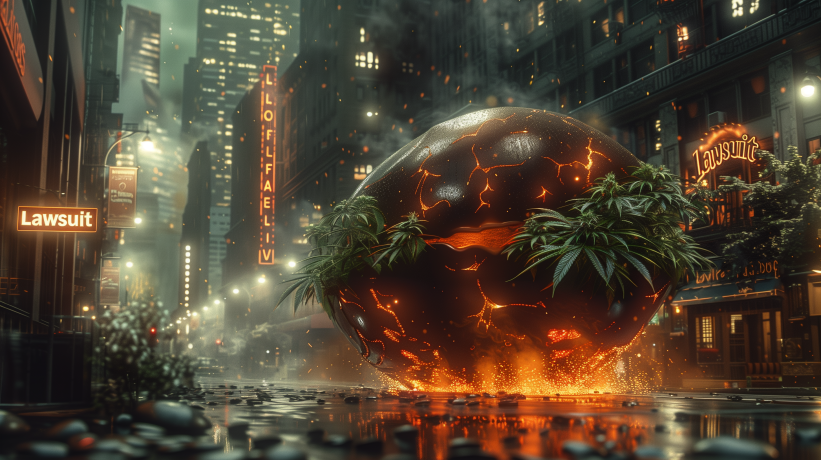
A tale of two sirens: the Starbucks v. Starbuds trademark battle will likely turn on whether the striking similarities between their logos and names create confusion and dilution.
The Starbucks v. Starbuds trademark showdown brewing in federal court will be closely watched by brand owners and IP practitioners alike. With Starbucks asserting a full slate of infringement, dilution and unfair competition claims, the case is poised to be a master class on the power and limits of trademark law.
Starbucks wields a potent arsenal of registered and famous marks and compelling evidence of copying. But Starbuds will argue the parody defense and fight to frame its brand as tongue-in-cheek commentary, not crass commercialism. Expect a fierce battle ahead to determine where the lines are drawn.
With the stakes so high for both sides’ brand identities, settlement remains possible. But don’t be surprised if this dispute percolates all the way up to the high court for a ruling that redefines the scope of both parody and dilution in the digital age.
Facing a Complex Trademark Dispute? Consult an Experienced IP Litigator Today.
If your business is staring down a bet-the-brand trademark battle, contact an experienced intellectual property litigation attorney immediately. Seasoned trademark specialists can quickly assess the key issues, explain your options and craft smart strategies to protect your investment in your brand.

Don’t let an infringement accusation threaten your hard-earned brand equity. Contact us to discuss your unique situation and legal needs.
Test Your Starbucks v. Starbuds Lawsuit Smarts
Questions: Claims & Defenses
-
- 1. What type of trademark infringement has Starbucks NOT alleged against Starbuds?
- A) Federal trademark infringement
- B) Reverse confusion
- C) Dilution by blurring
- D) Dilution by tarnishment
- 2. How does dilution by blurring differ from dilution by tarnishment?
- A) Blurring weakens mark distinctiveness; tarnishment harms reputation
- B) Blurring requires confusion; tarnishment does not
- C) Blurring applies to similar marks; tarnishment to identical marks
- D) Blurring requires fame; tarnishment only requires distinctiveness
- 3. What key fact is most likely to boost Starbucks’ infringement claim?
- A) Starbuds operates a single truck in one city
- B) Both companies use green and black color schemes
- C) Starbuds depicts its siren mascot smoking marijuana
- D) Starbucks has used its marks for over 50 years
- 4. What is Starbuds’ strongest potential defense?
- A) STARBUDS is an obvious parody, not source identifier
- B) Coffee and cannabis are totally different products
- C) No evidence of actual consumer confusion exists
- D) STARBUCKS is conceptually weak for cafes
- 5. Why is this case likely to settle before trial?
- A) Juries are very unpredictable in parody cases
- B) Given Starbucks’ fame, an injunction is probable
- C) Trials are very expensive with bad optics for both sides
- D) All of the above make settlement likely
- 1. What type of trademark infringement has Starbucks NOT alleged against Starbuds?
Answers: Claims & Defenses
-
- 1. B) Starbucks alleges forward confusion, not reverse – it’s the senior user with the famous mark, not the junior user.
- 2. A) Blurring erodes a mark’s source identifying uniqueness; tarnishment degrades its reputation via unsavory associations.
- 3. D) 50 years of use is compelling evidence of the STARBUCKS marks’ strength, fame and priority over STARBUDS.
- 4. A) Obvious, non-confusing parodies used for expression, not source identification, can be immune from trademark liability.
- 5. D) The unpredictability, expense, and negative PR of a drawn-out public court fight make settlement probable for both parties.
Disclaimer
The analysis provided in this article on the Starbucks v. Starbuds trademark lawsuit is for general educational purposes only. It does not constitute formal legal advice or create an attorney-client relationship.
Trademark laws and defenses are complex, fact-specific and subject to change. Outcomes discussed are hypothetical examples only. For legal guidance tailored to your unique situation, please consult an experienced trademark attorney licensed in your jurisdiction.
Full Lawsuit
Related Articles
The Great Sock Heist: Did Louis Vuitton and Pharrell Pocket Someone Else’s Idea?
From Brand to Bland: The Unseen Battle Against Trademark Genericide
